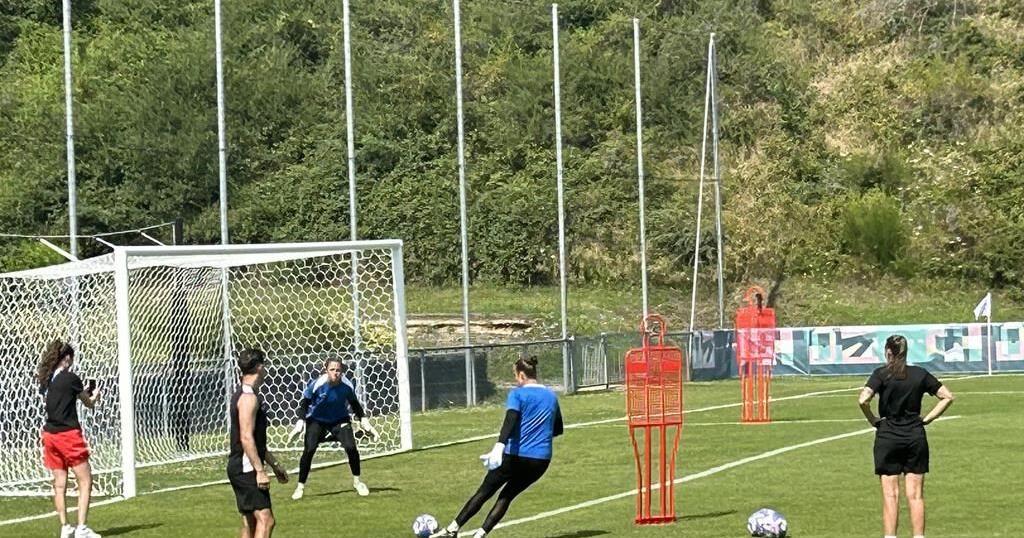SAINT-ETIENNE, France – Slotted in a valley along the hilly neighbourhoods on the outskirts of this small French city sits a modest two-field soccer complex that became the controversy epicentre for a reeling Canada Soccer program.
A team analyst, part of the Olympic women’s soccer team’s coaching staff, was caught using a drone to spy on New Zealand’s practices at the venue before the start of the Paris Games.
FIFA came down hard on the program over the weekend. Six points were docked from the team, Canada Soccer was fined and three coaches — including head coach Bev Priestman — were suspended for one year.
“Fair play is certainly what I learned at school about what the Olympic Games are supposed to be about,” International Olympic Committee spokesman Mark Adams said before the FIFA ruling at the IOC’s opening news conference. “That’s what we appeal for. That’s what the rules are there for.”
The Canadian Olympic Committee and Canada Soccer are appealing the point deduction from FIFA. A hearing was scheduled for later Tuesday at the Court of Arbitration for Sport’s tribunal in Paris.
A decision was expected before Canada closes out Group A play Wednesday night against Colombia in Nice.
Many questions remain in a scandal that has clouded the Canadian squad, even though there’s no suggestion the players were involved.
It will take time before there are answers. Canada Soccer plans an independent external investigation.
It remains unclear why New Zealand — at No. 28 the lowest-ranked team in Group A — was a surveillance target priority in the first place. The Football Ferns are a plucky squad with some spark, but have just one win in 16 all-time head-to-head matchups against eighth-ranked Canada.
Putting aside ethical and sportsmanship issues — not to mention that drone use is prohibited at training sites — but the decision to risk so much seems even stranger given set-up at Stade Auguste Dury.
The field has translucent Olympic banners around most of the perimeter’s installed mesh fencing but there are gaps. Low-hanging branches provide only a partial obstruction of the view.
Player formations, penalty kick practice and set plays — some of the key training information that would be viewed with drone footage — were mostly visible just by peering through the fence and down the hill.
The sidewalk near the venue entry road is only a stone’s throw from the sideline, so the sound of coaches and players was clearly audible. Private residences and retail establishments on top of the hill above the field also have a view of the pitch.
A handful of security guards patrolled the venue during two Canadian training sessions there last week.
At one point Saturday, a curious area resident pulled his car up to the venue entrance in the middle of training. After a short discussion, he was asked to turn around.
A British soccer fan, eager to catch a glimpse of the Olympic champions, sat quietly on a nearby bench just beyond the fence without issue.
Canada (2-0-0) will practise on Tuesday at Stade des Iscles. A victory over Colombia would give Canada three points and a berth in the knockout round.
This report by The Canadian Press was first published July 30, 2024.
Follow @GregoryStrongCP on X.
